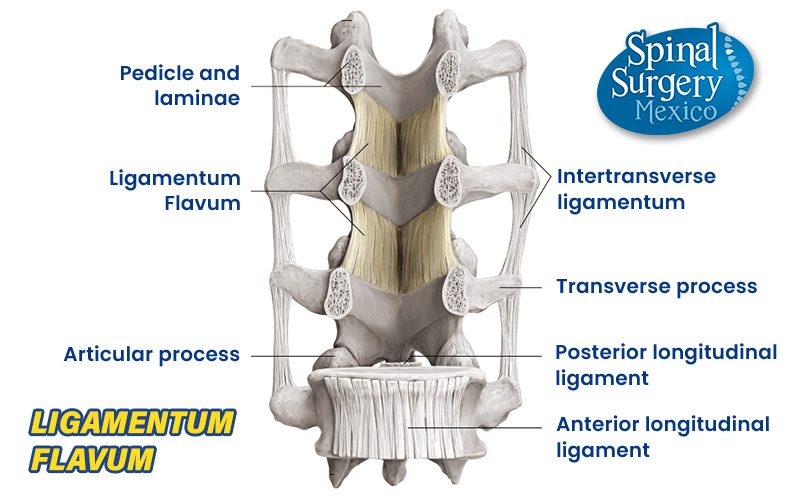The ligamentum flavum
The ligamentum flavum (Latin for yellow ligament) are a series of ligaments that connect the ventral parts of the laminae of adjacent vertebrae. They help to preserve upright posture, preventing hyperflexion, and ensuring that the vertebral column straightens after flexion. Hypertrophy can cause spinal stenosis.
They appear yellowish due to their high elastic fibre content.
Anatomy
Each ligamentum flavum connects the laminae of two adjacent vertebrae. They attach to the anterior portion of the upper lamina above and the posterior portion of the lower lamina below. They begin with the junction of the axis and third cervical vertebrae, continuing down to the junction of the 5th lumbar vertebra and the sacrum.
In the neck region the ligaments are thin, but broad and long; they are thicker in the thoracic region, and thickest in the lumbar region. They are thinnest between the atlas bone (C1) and the axis bone (C2), and may be absent in some people. They become longer inferiorly in the cervical spine, as the distance between adjacent laminae increases.
They are best seen from the interior of the vertebral canal. when looked at from the outer surface they appear short, being overlapped by the lamina of the vertebral arch.
Structure
Each ligament consists of two lateral portions which commence one on either side of the roots of the articular processes, and extend backward to the point where the laminae meet to form the spinous process; the posterior margins of the two portions are in contact and to a certain extent united, slight intervals being left for the passage of small vessels. Small veins that form anastomotic connections between the internal and external vertebral venous plexuses may pass between a pair of the ligaments.
*Credit: This article incorporates text in the public domain from page 290 of the 20th edition of Gray’s Anatomy (1918).

